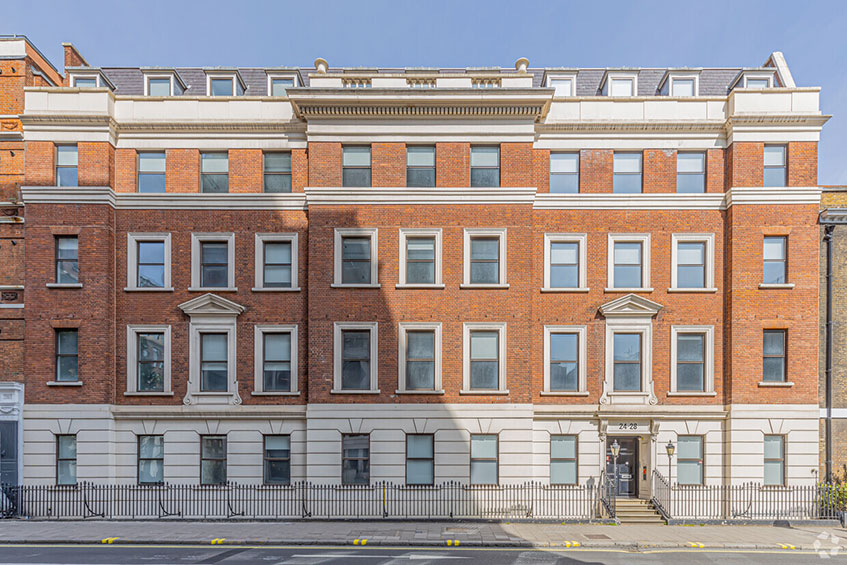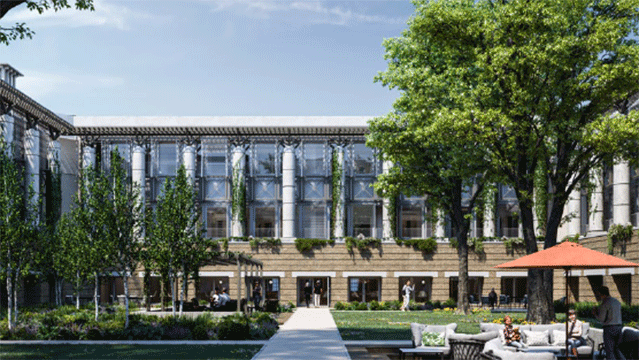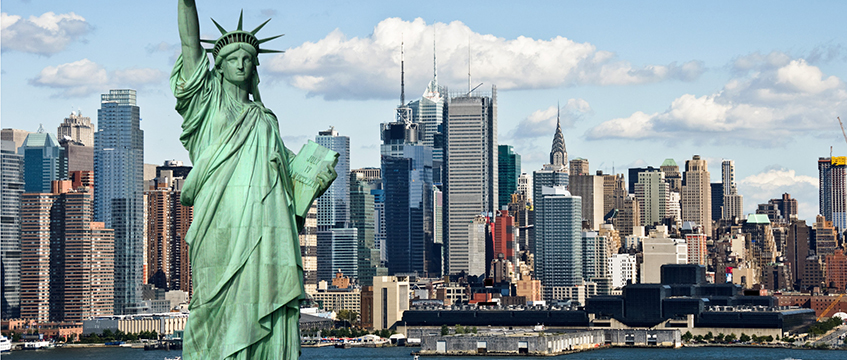When someone makes their way across the Atlantic to hunt for opportunity, they arrive in New York. It has been that way for centuries, and real estate is no different. Investors from across the globe flock to the city’s secure, reliable market where big deals are made on even bigger buildings. But what happens when that gateway stops looking as alluring as it once was?
The New York market is heating up to the point where those looking for yield are starting to scope out alternatives. The average office cap rate in the Big Apple has fallen by 200 basis points since 2010 and the top end of the market is flirting with either side of 4%.
Rents, both commercial and residential, keep rising, meaning that both businesses and residents are looking for other cities to live and work in. In fact, domestic migration to the New York metropolitan area has dropped by a net 900,000 since 2010.
Although Manhattan continues to be the most active property market in the US, there are signs that its dominance is not inevitable. First-half office sales in the borough accounted for 11.9% of all US deals in the sector, which sounds impressive – except that it was close to 22% last year and 18% the year before.
Core coastal gateway cities have is that they’ve grown to the point where the cost of living is having an impact on their workforce
Ken McCarthy, principal economist at Cushman & Wakefield, says: “One of the challenges that the core coastal gateway cities have is that they’ve grown to the point where the cost of living is having an impact on their workforce. People have to move further out of the urban core to afford housing.”
So where to next? McCarthy says it is about following the flows of people. The migration trends that drove the US economy and commercial real estate in the 1990s are back, with people heading south again following a pause in the post-recession years. According to the US Census Bureau, 10 of the 15 fastest-growing “large cities” – ones with more than 50,000 residents – were in the south in 2016. That has bolstered economic performance in major metropolitan areas such as Dallas-Fort Worth in Texas.
“As we move later in the cycle, if you’re going to look for yield, those are the kinds of places you’d want to go to,” McCarthy says. “They’re better performing and they haven’t seen the same kind of price roundup you’ve seen in the core gateway markets.”
New York has the trophy assets, but if you want to make the most of economic growth, follow the US population to these four cities:
Atlanta
Real estate has a habit of thriving when cities invest in infrastructure and transport. Suddenly, residents are able to commute to places they would not have been able to before and new parts of the city are open to opportunities. That means opportunity must be brewing in Atlanta, which in November voted for a bill to invest $2.5bn into the city’s public transport operator, MARTA.
Atlanta is in a strong position to welcome new business. Its business costs are at the lower end for major US cities, at 88% the national average, while the number of millennials in the city – where much of the talent for growing industries will come from – has risen by 12.3% over the past five years.
On the property side, there is clear demand for office space. Average rents climbed by 2.5% in Q2, reaching a record $24.10 per sq ft, while prime office rents topped $34 per sq ft for the first time. Rent continues to climb despite a steady supply stream. Even after 1.3m sq ft of space came on line in Q2, there is still 3.2m sq ft under construction. Judging from recent trends, that space will not be difficult to fill.
Dallas
What do Pizza Hut and Dallas have in common? A man named Mike Rawlings. The Democratic mayor of the third biggest city in Texas is the former chief executive of the global pizza chain, which could not be more apt. The city, part of the only county in north Texas that did not vote for Donald Trump in last year’s election, draws in companies and talent with its business-friendliness.
Between 2009 and 2012, Dallas’s GDP grew by 19.1% – notably higher than New York’s 11.1% and the Bay Area’s 16.7%. PwC ranked Dallas second in its 2017 Markets to Watch publication, noting that the city has managed to avoid extreme booms and busts. Its education – there are more than 30 universities and colleges in the metro area – and below-average cost of doing business attract companies looking to expand
Phoenix
Arizona’s capital is the place to go if you like the idea of California but want the costs replaced with growth prospects. The city is a “late-recovery market”, only recently turning a corner from the global financial crisis, but that means we can expect more growth to come.
Unemployment is once again inching toward pre-recession levels, falling from more than 10% in 2010 to 3.9% this April – though still below the 2.8% figure in May 2007. A third of the jobs created in the past year were office-based, with financial services growing at a rate of 4.4%.
The city’s status as a major player in the e-commerce field also reflects a strong bet for economic and commercial real estate growth, given the growing importance of the sector. As of the end of 2016, nearly half of the 3m sq ft of industrial property under construction was prelet, and the vacancy rate is expected to drop below 8.5% for the first time since 2007.
Orlando
Last year, Orlando had a record-breaking 68m visitors, which is why the city is, understandably, synonymous with tourism. But it is also the reason Orlando is pushing a campaign called “You don’t know the half of it”.
Between being home to University of Central Florida, the biggest public university in the US by 2016 student intake, and more than 2,300 tech companies, Orlando has a growing, varied and office-hungry market.
Office vacancy rates fell to their lowest level since 2007 in Q2, down from 12% to 10.7%, year-on-year. Unemployment tumbled to 3.7% while office-based jobs grew by 4.5% in that same period. Financial services were particularly strong at 7.3% annual growth.
Cushman & Wakefield says it expects that momentum to continue, which is unsurprising considering that the number of households in the city is expected to grow by 12.2% over the next three years. With house prices still at 82% of their peak, there is plenty of potential for both business and residential growth.
To send feedback, e-mail karl.tomusk@egi.co.uk or tweet @ktomusk or @estatesgazette











